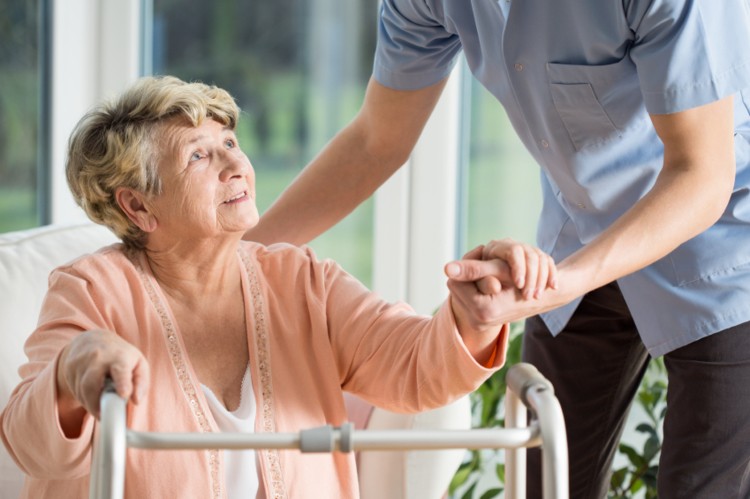As we age, our bodies often go through some changes. These changes increase the risks of getting health problems. Vulnerability of chronic wounds is among the major health issues that we might encounter. Therefore, it is important to learn the best practices for caring for and treating wounds.
Understanding Wound Care
Wound treatment and care in seniors are important steps. It prevents infections and complications like sepsis or cellulitis. However, wound care and treatment techniques vary for chronic and acute wounds.
Acute wounds often include burn, traumatic, and surgical injuries that result from a skin cut. Their treatment and care depend on the wound severity. We can treat minor wounds with bandaging, antiseptic, and cleansing. However, if we are dealing with major ones, we may require stitches to close them.
On the other hand, chronic wounds take months or even years to heal. Examples include pressure ulcers and arterial ulcers. Managing and treating chronic wounds doesn’t just require regular dressing. It also needs cleaning with the help of a primary care physician. Sometimes, we might require specialized treatments. These treatments may include skin grafts or vacuum-assisted closure.
Why Wound Care is Crucial among Elderly Patients

Since our aged skin heals more slowly than that of young ones, it creates perfect breeding grounds for infection, especially when it is not well cared for. As seniors, we are at a greater risk of getting an infection in our severe wounds because we might lack the mental competence, skill, or mobility required to care for those wounds.
An illness can have serious consequences for adult patients and the elderly with a weakened immune system; infections may spread quickly, thus jeopardizing their health or even lives. This is why proactive and comprehensive wound care can minimize the risks of injuries that often lead to poorer patient health results.
Challenges the Elderly Face in Wound Care
Wound care and treatment for elderly patients come with challenges that need proper consideration. These challenges include the following:
- Diabetic ulcers ─ Diabetic patients are at a higher risk of serious injections from chronic wounds. Even a minor wound requires proper treatment to avoid complications. Using a mild cleaning agent instead of a harsh one, like alcohol, may help minimize discomfort and pain during wound treatment and care.
- Pressure ulcers ─ Also called bed sores are a major problem among elderly patients. Many patients develop pressure ulcers, resulting in pain and increased healthcare expenses. Avoiding this problem in elderly patients involves using best practices, like assessment and reassessment, to note all the changes in the patient’s condition that might increase the risks of getting pressure ulcers.
- Surgical wounds ─ Elderly patients undergo surgical processes that require wound treatment and care management at home. The right care is important to promote healing and avoid infections. Following instructions from healthcare providers about wound cleaning and dressing changes is important for good results.
- Skin bruises & tears ─ Seniors are vulnerable to skin bruises and tears because of weakened skin strength and elasticity. Good wound care is important to address all these issues. Dressing and cleaning wounds properly, replacing dressing more regularly until wounds completely heal, and using the right products, such as hydrogel sheets, are important steps to prevent infections and facilitate healing.
Treating Chronic Wounds ─ The Best Practices

Elderly patients suffering from chronic wound injections require hospitalization or treatment with very strong antibiotics. The sooner they do it, the better.
Therefore, if you realize that your wounds are not healing or the affected place has become swollen or inflamed, you should visit your nurse practitioner or doctor immediately because that indicates an infection. Here are the best practices that a medical expert will use to ensure chronic wound care:
Monitoring Various Healing Stages
As wounds heal, injured elderly patients experience peeling and itching of their skin around the affected area. Since seniors’ skin is drier, the itching can be challenging.
This is why talking about all those challenges with your doctor is crucial. This can prevent the possibility of your wound getting an infection or something far worse.
Ensuring Enough Oxygenation
One common reason for insufficient tissue oxygenation is the local vasoconstriction that results from sympathetic overactivities. This happens usually because of unrelieved pain, a deficit of blood volume, or even hypothermia.
Seeking Emotional Support
For seniors, living with a chronic wound can be very challenging, especially emotionally. This is why, as elderly patients, we must get emotional support. We can get this support from our mental health experts, friends, or family. With this, we can cope with our condition.
Multidisciplinary Approach

This approach involves different healthcare experts and is important for proper wound treatment and care among elderly patients at home. The approach often brings together dietitians, physical therapists, nurses, and physicians to address our unique needs and promote a faster wound-healing process. By collaborating or sharing their skills and knowledge, healthcare experts will develop a comprehensive care plan tailored to our needs.
Keeping Wounds Clean
Medical experts clean their patients’ wounds with disinfectant and antiseptic two times a day. They also cover the wounds with sterile dressing pads, which they can remove from aging skin with little distress.
Evaluating Wound Care and Treatment Practices
Regular evaluation of best wound care practices is important. It ensures protocol adherence and identifies areas that require improvements. By monitoring and implementing the best practices, medical experts will assess their care techniques’ effectiveness, improve patient well-being/safety, and make necessary adjustments. This process helps to identify deficiencies or gaps in wound treatment and care practices. It also enables medical experts to take the right measures to optimize the results for their elderly patients.
The bottom line is that chronic wounds significantly affect elderly patients’ quality of life. However, proper management and prevention can prevent and treat wounds.
We can also minimize the risks of chronic wounds by managing our health conditions, getting medical care on time for our wounds, and following the right healthy lifestyle.







